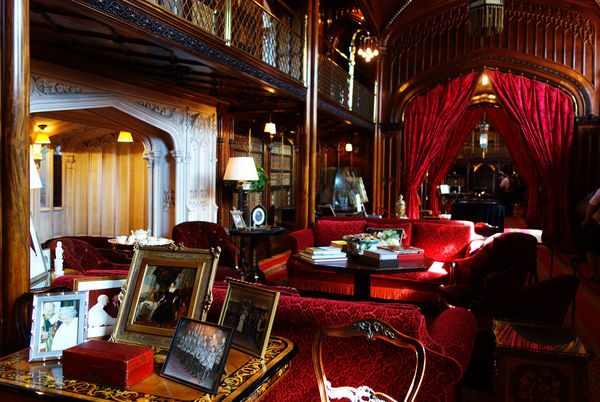England’s Castles and Manors Have a Story to Tell
By Rick Steves

The English countryside is studded with all manner of manors, castles, and palaces. Many of these stately homes, as the English call them, were built in Victorian times by ridiculously rich nobles and aristocrats. To maintain these lavish mansions and grounds, which have been crippled by taxes on both income and inheritances, many have opened their doors to visitors (some are managed by the National Trust, while others remain private).
These days, the most popular stately home to visit is Highclere Castle, where much of Downton Abbey was filmed (both the TV series and the film). An hour from London, Highclere has been home to the earls of Carnarvon since 1679, but the present, Jacobean-style house was rebuilt in the 1840s by Sir Charles Barry, who also designed London's Houses of Parliament. The Egyptian exhibit there features artifacts collected by Highclere's fifth earl, a keen amateur archaeologist.
Because of Downton Abbey's popularity, Highclere tickets can be hard to come by. For a similarly grand experience, visit Blenheim Palace, 30 minutes from Oxford — my pick for the number-one stately home in Britain. Too many palaces can send you into a furniture-wax coma, but as a sightseeing experience and for simple visual grandeur, Blenheim is among Europe's finest.
The palace was gifted to John Churchill, first duke of Marlborough, after he defeated Louis XIV's French forces at the Battle of Blenheim in 1704. This event marked a turning point in the centuries-long struggle between the two nations, as it put the skids on France's rise and saved Britain. Some historians claim that if not for his victory, we'd all be speaking French today. Nearly two centuries later, another famous Churchill, named Winston, was born at Blenheim. It's inspiring to be here in the home of the two Churchills who saved Britain, first from the French, then nearly 250 years later, from the Germans.
The last time I was here, I nearly didn't visit, thinking that on a gorgeous Saturday in July this palace would be a mob scene. I decided to go late in the day (arriving two hours before closing) and I virtually had the place to myself. The light was warm, the vibe was mellow, and I was able to really appreciate the fine interior, from the sumptuous state rooms used to impress visiting dignitaries to the private apartment, which provides an excellent behind-the-scenes peek at the palace. The 2,000-acre yard is as majestic to some as the palace itself.
Arundel Castle (in the south, between Brighton and Portsmouth) graces the valley below it with a fairytale mystique. Like many castles, Arundel was built on a historic site — an 11th-century motte-and-bailey castle (with a keep on a mound). But what we see today is the fancy of a fabulously wealthy nobleman in the 19th century. It's got great wow appeal — but is all neomedieval, rather than truely historic.
The Duke of Norfolk — the top dog among all English dukes — still lives here. Paying the steep admission price and exploring the opulent interior caused me to think more about economic justice than fancy furniture. But the place is undeniably impressive, including a wonderful library with rich mahogany woodwork and 10,000 musty leather-bound books on two levels, along with delightful themed gardens — especially the Collector Earl's Garden, which contains an intriguing stumpery (upturned oak trees).
One of my favorite stately homes is Stanway House, in the Cotswolds. Like many rural mansions, it's open to the public (at certain times) to help pay the bills. I've become friends with the lord here. For a decade I knew him as Lord Neidpath. Then he inherited a different title, and now he's the Earl of Wemyss. When I think about British aristocracy, I think of people like him — eccentrics with a noble commitment to English high culture and all sorts of interesting stuff in their back closet.
The Earl of Wemyss is a good example of the challenges of today's English aristocracy: He's land-rich, but seemingly cash-poor. He likes to greet visitors and is fascinating to chat with. It's enthralling to tramp through this house that feels lost in time, and even look upstairs in his bedroom and see what he's reading.
Near Stanway House, Snowshill Manor was left to the National Trust after its owner, Charles Paget Wade, passed away in the 1950s. Wade was a recluse and a collector of anything and everything: bicycles, kitchen equipment, finely carved spinning wheels, samurai armor, even elaborate figurines carved by prisoners from the bones of meat served at dinner. After touring this ultimate hoarder's house, you learn that the family motto is, fittingly, "Let Nothing Perish."
Visiting these stately homes provides more than just a chance to ogle some big, fanciful estates. Each one has an interesting story to tell about a far grander and more class-conscious time in England's past.

